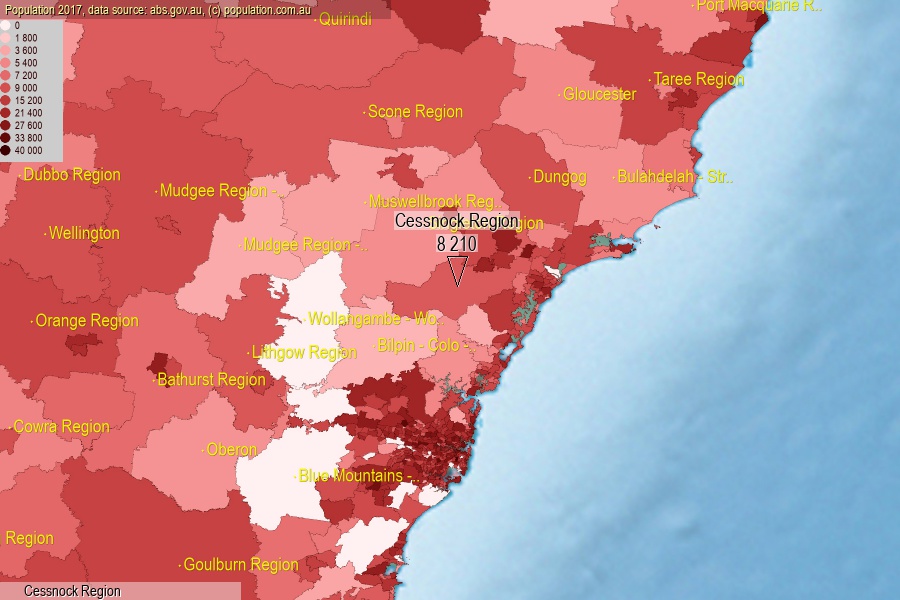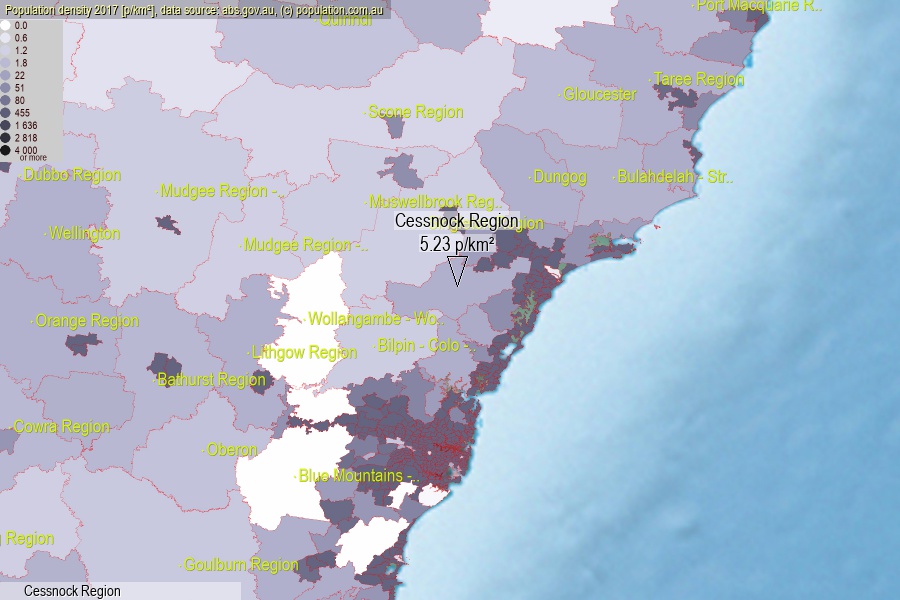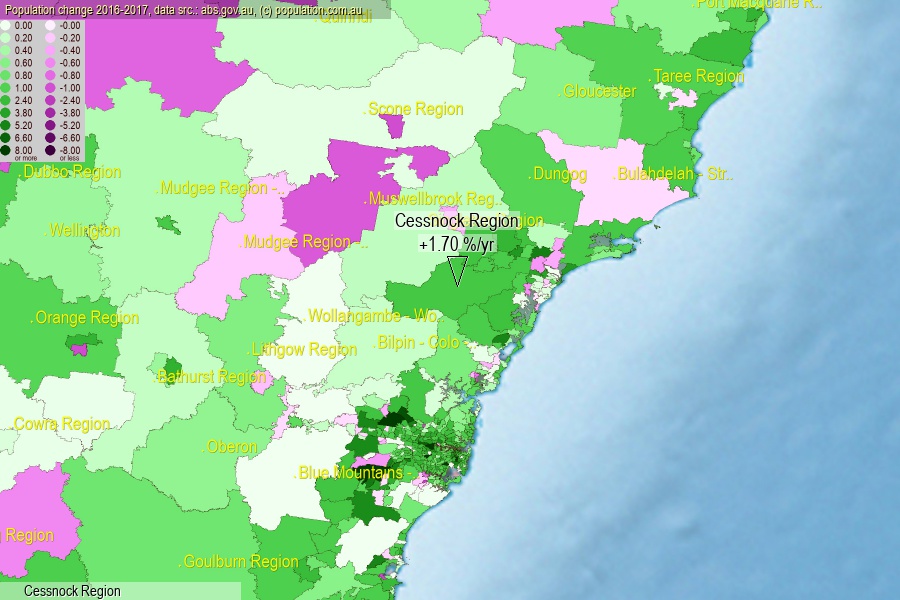 population.com.au
population.com.auLast official estimated population of Cessnock Region (as Statistical Area Level 2) was 8 210 people (on 2017-06-30)[2]. This was 0.03% of total Australian population and 0.103% of NSW population. Area of Cessnock Region is 1 570.40 km², in this year population density was 5.23 p/km² . If population growth rate would be same as in period 2016-2017 (+1.7%/yr), Cessnock Region population in 2025 would be 9 393. [0]



Click to enlarge. Cessnock Region is located in the center of the images.
Population [people], population density [p./km²] and population change [%/year] [2]
View borders » (new window) [4]
[1991-1992] +2.02 %/Yr.
[1992-1993] +1.61 %/Yr.
[1993-1994] +1.98 %/Yr.
[1994-1995] +2.29 %/Yr.
[1995-1996] +2.55 %/Yr.
[1996-1997] +2.21 %/Yr.
[1997-1998] +1.66 %/Yr.
[1998-1999] +1.55 %/Yr.
[1999-2000] +0.76 %/Yr.
[2000-2001] +1.53 %/Yr.
[2001-2002] +1.56 %/Yr.
[2002-2003] +1.91 %/Yr.
[2003-2004] +0.86 %/Yr.
[2004-2005] +1.28 %/Yr.
[2005-2006] +0.95 %/Yr.
[2006-2007] +1.97 %/Yr.
[2007-2008] +2.16 %/Yr.
[2008-2009] +1.43 %/Yr.
[2009-2010] +0.93 %/Yr.
[2010-2011] +1.16 %/Yr.
[2011-2012] +2.09 %/Yr.
[2012-2013] +2.21 %/Yr.
[2013-2014] +1.99 %/Yr.
[2014-2015] +2.32 %/Yr.
[2015-2016] +2.41 %/Yr.
[2016-2017] +1.70 %/Yr.
[0] Calculated with linear interpolation from officially estimated population
[1] Read more about SA2 and Australian Statistical Geography Standard (ASGS) on abs.gov.au
[2] Population data from Australian Bureau of Statistics (Population and density: 2017; change: 2016-2017)
[3] Digital Boundaries: Australian Statistical Geography Standard (ASGS) 2016.
[4] Border coordinates are simplifyed using Ramer-Douglas-Peucker algorithm.